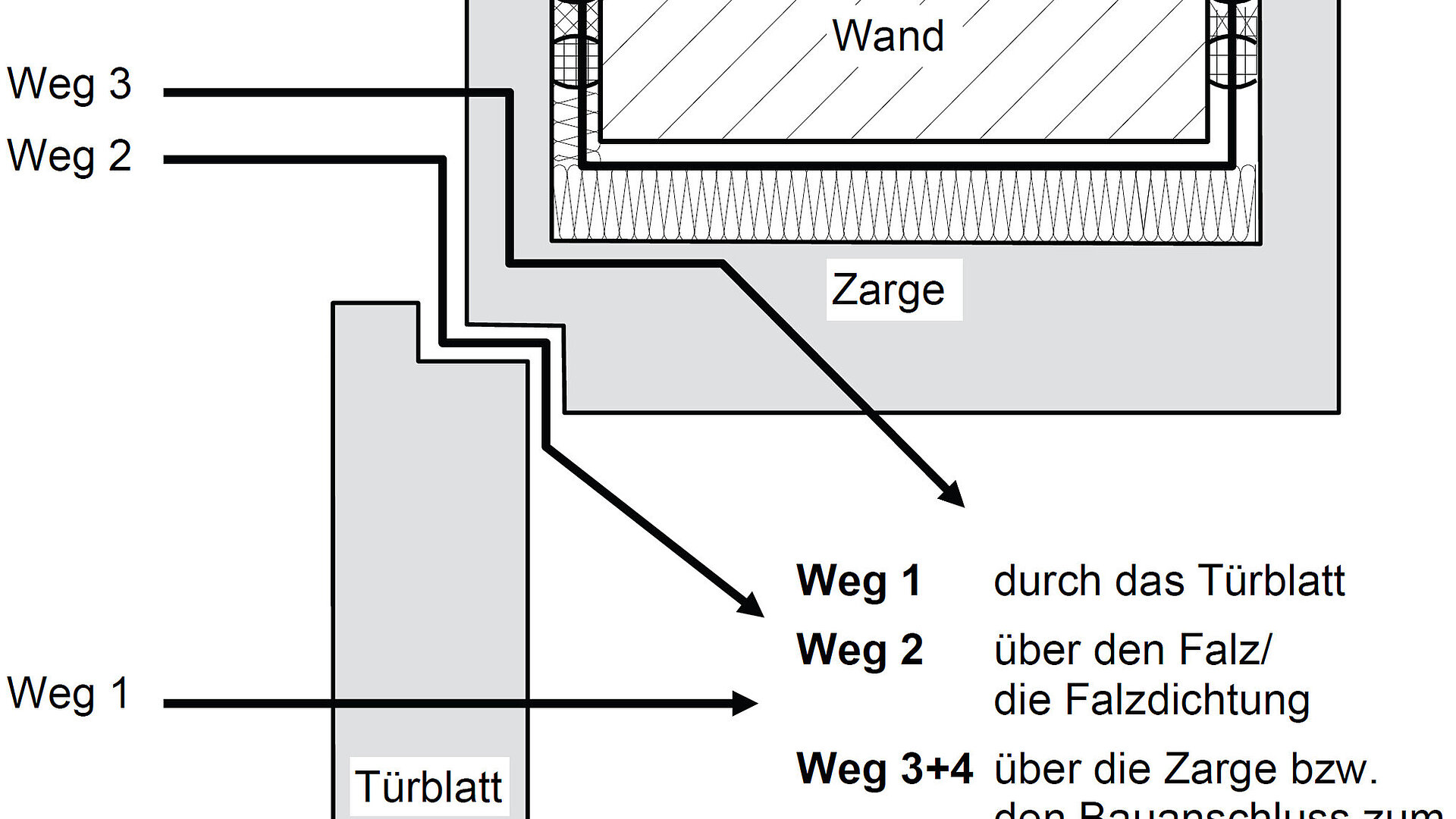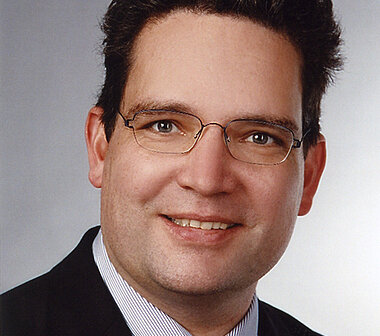Reading time: 1 minute
In 2016, the Insitut für Fenstertechnik e.V. (ift Rosenheim) is celebrating its 50th anniversary. According to the motto ‘ift Rosenheim – 50 years of service to the industry’, the technical development is presented in a ten-part series of articles. The individual articles are reflecting timeframes of 5 years from founding of the institute. They enable a short glance at the events at that time, take up as a key aspect a pioneering research project at that time, summarize goals, contents as well as results, then illustrate the further development as well as the impact thereof on the industry, and the current state of the art.
Protection against noise
Need for action
The collection of examples of DIN 4109:1989 in supplement 1 [4] contains no construction samples for internal doors; the proof of the sound insulation has to be made with laboratory measurement. The research project regarding sound insulation of internal doors should determine the possibilities of a verification procedure on basis of general design features.
Aim of the Research Project
The sound transmission paths at internal doors were examined in the research project with the aim of generating a similar table method for the technical proof for doors, as submitted in supplement 1 for windows and roller shutter boxes. The foundations should be laid and, if possible, proposals should be prepared. The research project started in 1994.
Results of Research Project and Perspective
The analysis of sound transmission paths through a serviceable internal door result in a total of 5 independent sound transmission paths (image 1). It showed that the sound transmission paths through the door panel as well as through rebate and floor joint have the largest influence on sound insulation of a serviceable internal door.
The examinations showed that the sound passage through the door panel (path 1) depends very much on its construction and structure. Specific constructive requirements were only possible for single-layered door leaf in relation to the mass per unit area with a rather restricted usability of a sound insulation of Rw = 32 dB.
The defining element for sound insulation of the door is the sound insulation of the door leaf. Further components (in particular rebate and floor joint) may reduce the sound insulation of the internal door only as little as possible.
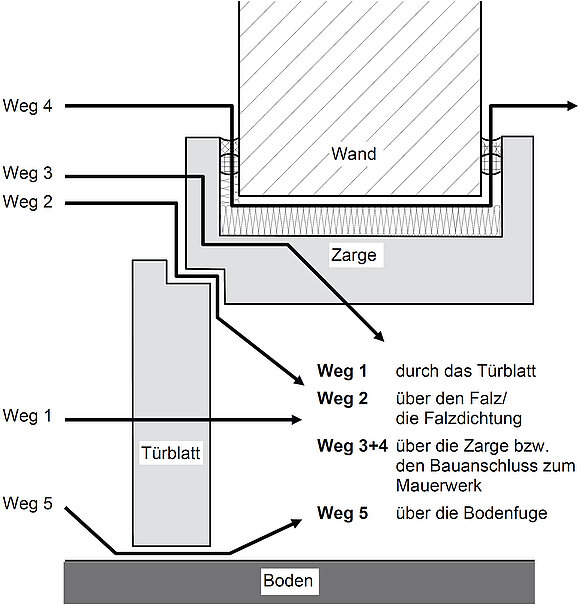
The industry has already developed sealing profiles and drop down seals. Due to the linear constructions, a description of the sound passage by a joint sound reduction index RS is offered that was already defined in various publications [14, 15, 25] for the characterization of the sound passage via joints.
The final report of the research project of sound insulation of internal doors was published in 1996. It documented the state of the art that is with some adjustments still relevant today. The result was that a forecast of the sound insulation of internal doors is basically possible, whereby the acoustic suitability of the individual parts (door leaf, rebate and floor seal, door frame) has to be proven.
Implementation of Research Projects
Publication of Results
Various publications regarding sound insulation of doors [16, 18, 20, 21] as well as sound reduction of joints [17, 19, 21, 23, 24] were published until now in addition to the publication of the research report [8]. Not only door manufacturers were addressed but also end-user and planner whom the special features in planning and the proof of the sound insulation of doors should be brought closer. Priorities were the evaluation of joint sound problem (especially rebate and floor joint) as well as installation joints. A simple verification method via nomogramm was proposed in addition to the description and establishment of the joint sound reduction index RS.
Development of Measuring Specifications for the Sound Reduction of Joints
The implemented research project reveals that the joint sound transmission via rebate and floor joint has a significant influence on the sound insulation of a serviceable door leaf. The joint sound reduction index was selected as parameter in order to quantify this sound transmission. Image 2 shows an example for a measuring arrangement for floor seals.
A general measuring specification as ift-guideline [22] was developed for the measurement. In the meantime, with the help of ift Rosenheim, this guideline has found its way in the international test specifications for laboratory measurements DIN EN 10140-1 [5].
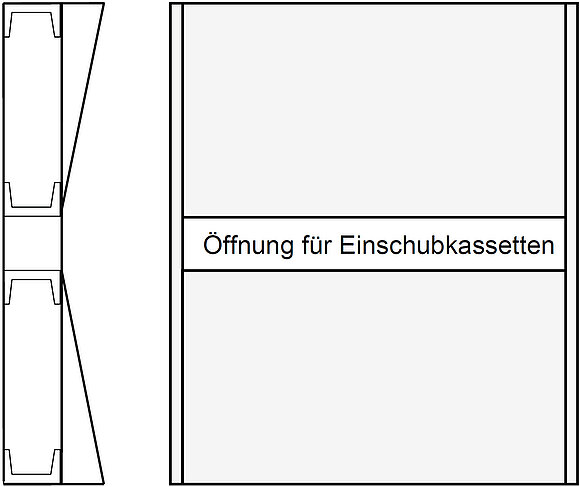
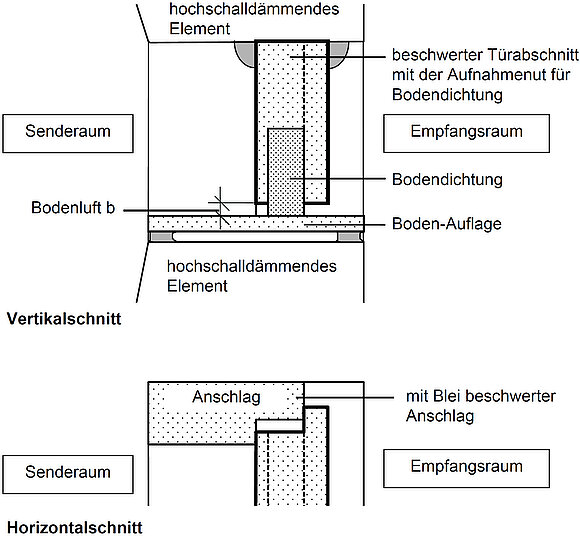
Transfer of Results in the National and International Standardization
Furthermore, the results of the research project were included in various standards and regulations.
- Revision of VDI-Guideline 3728:2012 „Sound insulation of movable room boundaries”; this take place in cooperation with ift Rosenheim
- Revised version/revision of DIN 4109 (see 3.1)
- Development of product standard of internal doors DIN EN 14351-2 (see 3.2)
Sound Insulation of Doors in These Days
Evidence of sound insulation of internal doors for the new DIN 4109
The revised version of the component catalogue DIN 4109-35 [12] recently contains a table method, where the sound insulation of internal doors can be determined by the parameters of the single components (door leaf, floor and rebate seal). This verification method is directly based on the ift-research project [8] and separates according to the sound transmission paths shown in image 1. The minimum requirements for the sound insulation of the door leaf as well as the sound reduction of joints (valued sound reduction index RS,w) for rebate and floor seal can be taken from table 1 on the basis of the planning value for the door element in functional condition (required Rw). Declared values for the sound reduction of joints can be tested or taken from table 2. The evidence of the sound insulation of the door leaf is made by a sound insulation test according to DIN EN ISO 10140-2 [5].
Table 1: Sound insulation of single sashed internal doors (flush door) without measurement (table 4 of DIN 4109-35 [12])
Column | 1 | 2 |
Row | Component | Specification |
1 | Single rebated door leaf | Rw ³ necessary Rw + 2 dB |
2 | Flush-closing door leaf | Rw ³ necessary Rw + 4 dB |
3 | Rebate seals | RS,w ³ necessary Rw + 10 dBa |
4 | Floor seal | RS,w ³ necessary Rw + 10 dB |
a Joint sound reduction index RS,w for rebate seals. The range of sealants is to be determined, so that the deformation of the door (proven by e.g. RAL type testing) is smaller than the range of the sealants. | ||
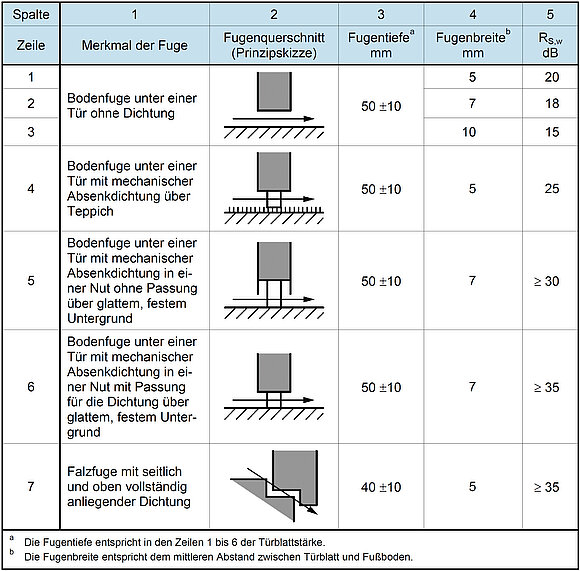
Table 2: Sound insulation of joints that can be opened during usage time (table 7 of DIN 4109-35 [12])
The tables 1 and 2 are published with the permission of DIN Deutsches Institut für Normung e. V. (German Institute for Standardisation). The version with the most recent issue date is relevant for the use of DIN standards, which can be bought at Beuth Verlag GmbH, Am DIN Platz, Burggrafenstr. 6, 10787 Berlin, Germany.
Determination of the Sound Insulation for the Verification in the CE Mark
The harmonised and in the context of the EU legislation developed product standards are gaining more and more importance. They serve an uniform labelling of the performance characteristics. A similar table method for the forecast of the sound insulation is presented [11] for doors on basis of the mentioned research project. Thus, a manufacturer can determine the sound insulation of the suitable door for the CE marking with the sound reduction indexes of the single components.
Summary and Perspective
This publication gives an overview on activities performed at ift Rosenheim but also on European and international level within the last 25 years regarding sound insulation of doors - especially internal doors. They are preliminary resulted in the national and European proof standards DIN 4109 and DIN EN 14351-2, which should be completed in 2016. The activities will also be continued in the future: The constructions will be developed and also the requirements for the acoustic insulation will increase due to an increased need for silence and confidentiality, but also influenced by new specifications in the field of serviceability.
Literature
- 25 Years Institut für Fenstertechnik e.V.; An overview.
Institut für Fenstertechnik e.V., Rosenheim 1991 - DIN 4109:1989-11
Sound insulation in buildings; requirements and verifications
Beuth Verlag, Berlin - DIN 4109:1962
Noise control in buildings
Page 1: Terms
Page 2: Specifications
Page 3: Examples for execution
Page 4: Floating screed on concrete floors, Rules for construction
Page 5: Clarifications
Beuth Verlag, Berlin - Supplement 1 to DIN 4109:1989-11
Sound insulation in buildings; Construction examples and calculation methods
Beuth Verlag, Berlin - Standards series DIN EN ISO 10140:2010
Acoustics – Laboratory measurement of sound insulation of building elements
Part 1: Application rules for specific products
Part 2: Measurement of airborne sound insulation
Part 3: Measurement of impact sound insulation
Part 4: Measurement procedures and requirements
Part 5: Requirements for test facilities and equipment
Beuth Verlag, Berlin - DIN EN ISO 717-1:2013-06
Acoustics – Rating of sound insulation in buildings and of building elements – Part 1: Airborne sound insulation
Beuth Verlag, Berlin - DIN EN ISO 16283-1:2014-06
Acoustics – Field measurement of sound insulation in buildings and of building elements – Part 1: Airborne sound insulation
Beuth Verlag, Berlin - ift-research report
Design features for sound insulating entrance doors of residences and office doors in timber and timber based material.
ift Rosenheim 1996 - VDI 3728:2012-03
Sound insulation of movable room
Beuth Verlag, Berlin - Building Regulation List, Issue 2014/2.
German Institute for Building Technology DIBt, Berlin - E DIN EN 14351-2:2014-2
Windows and doors – Product standard, performance characteristics – Part 2: Internal pedestrian doorsets without resistance to fire and/or smoke leakage characteristics
Beuth Verlag, Berlin - DIN 4109-35:2016-07
Sound insulation in buildings – Part 35: Data for verification of sound insulation (component catalogue) – Elements, windows, doors, curtain walling
Beuth Verlag, Berlin - Analyses from the archive of ift Rosenheim, 2016
- Ertel, H.; Mechel, F.P.; „Acoustic joint seals by acoustically effective flanking cavity and acoustical lip seals“; IBP report n° BS 35/79, 6.7.79
- Ertel, H.; Mechel, F.P.:
Experimental inspections of acoustical sealings; solutions for effective sealing constructions.
IBP report n° BS 57/81, 12.3.79 - Froelich, H.:
The sound-insulating door
ifz info SC-01, edition 1/95 - Froelich, H.:
Sound insulation of joints
ifz info SC-02, edition 4/96 - Froelich, H.; Küchler, A.; Sieberath, U.:
Internal doors mounted properly
ifz info MO-01, edition 2/98 - Saß, B.:
Assessment of sound insulation of installation joints – Application of joint sound reduction index
Building element and Technology, 2012-01 - Hessinger, J.; Schmidt, A.:
Sound insulation of internal doors
ifz info SC-08/1, edition 11/2015 - Hessinger, J.; Saß, B.:
Sound insulation of windows and doors
Building physics calendar 2014, ed. N. A. Fouad. Ernst und Sohn Verlag 2014 - ift-Guideline SC-01/2
Determination of sound reduction index of joints
ift Rosenheim, September 2002 - Installation of windows and external pedestrian doors within RAL-quality control
ift Rosenheim/RAL Quality Associations Windows, 1991 - Guideline for planning und construction of assembly of windows and doors.
Ed. RAL Quality Assurance Association: Windows and Doors, Frankfurt 2010 - Schumacher R.:
Sonically difficulties at window connections
Speech at Rosenheim Window and Façade Conference 1992
